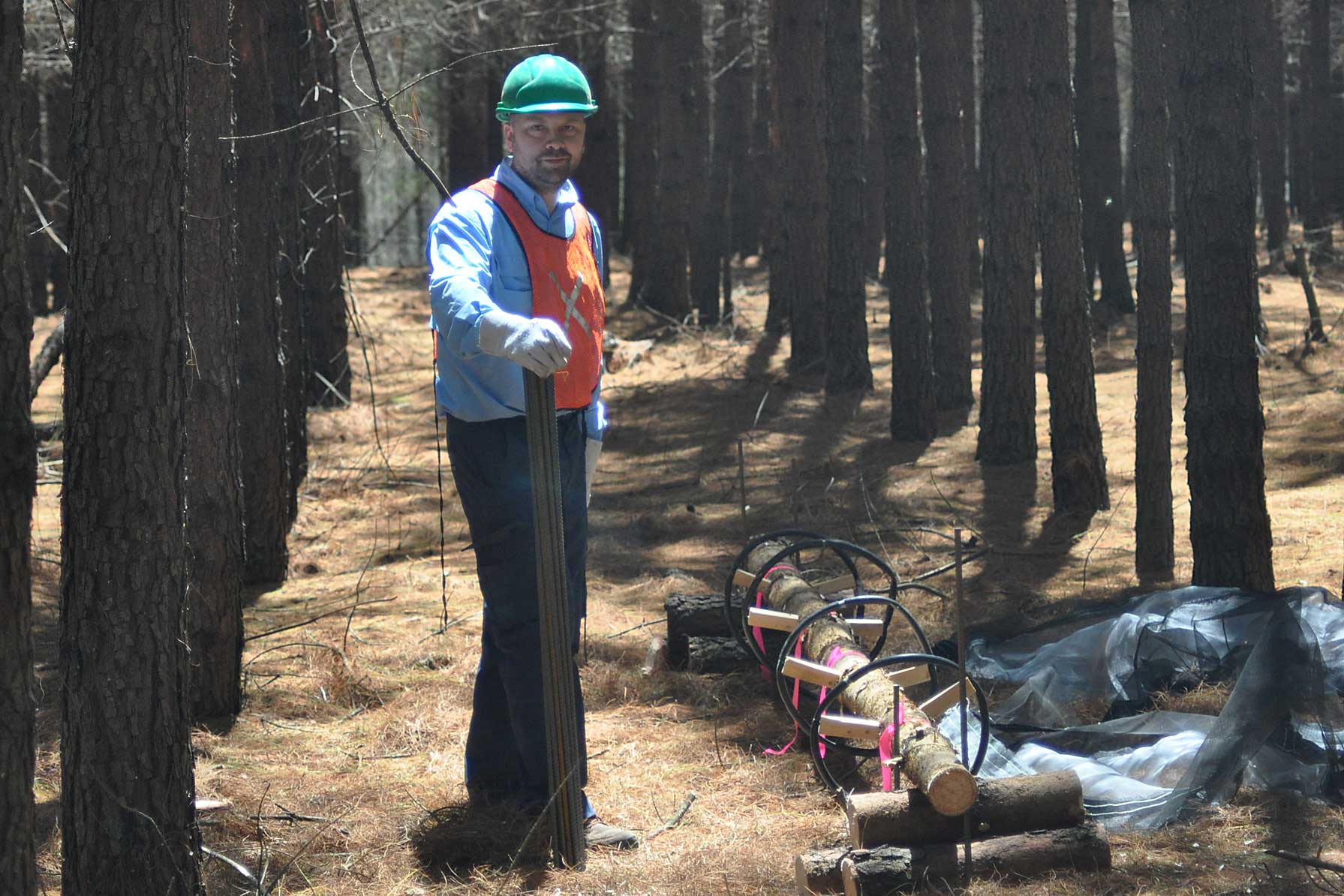Stazione L, Corley JC,
Allison JD,
Hurley BP, Lawson SA, Lantschner MV. (2025)
Novel associations among insect herbivores and trees: Patterns of occurrence and damage on pines and eucalypts.
Ecological Applications 35:e70018.
10.1002/eap.70018
Townsend G, Hill M,
Hurley BP, Roets F. (2025)
Escalating threat: increasing impact of the polyphagous shot hole borer beetle, Euwallacea fornicatus, in nearly all major South African forest types.
Biological Invasions 27
10.1007/s10530-025-03551-2 
D’Angelo D, Hu H, Lahoz E, Risteski J,
Steenkamp E T, Viscardi M,
van der Nest M A, Wu Y, Yu H, Zhou J, Karandeni Dewage C S, Kotta-Loizou L I, Stotz H U, Fitt B D L, Huang Y, Hu Y, Kiss L, Sorrentino R,
Nkomo T, Zhou X, Vaghefi N,
Sonnekus B,
Bose T, Cerrato D, Cozzolino L,
Creux N, D’Agostino N,
Fourie G, Fusco G,
Hammerbacher A, Idnurm A,
Wingfield BD. (2025)
IMA GENOME - F20 A draft genome assembly of Agroathelia rolfsii, Ceratobasidium papillatum, Pyrenopeziza brassicae, Neopestalotiopsis macadamiae, Sphaerellopsis filum and genomic resources for Colletotrichum spaethianum and Colletotrichum fructicola.
IMA Fungus 16:e141732.
10.3897/imafungus.16.141732
Martin G, Canavan K, Chikowore G, Bugan R, De Lange W, du Toit B, Harding G, Heath R, Hill M,
Hurley BP, Ivey P, Muir D, Musedeli J, Richardson DM,
Slippers B, Stafford L, Turner A, Watson K, van Wilgen BW. (2025)
Managing wilding pines in the Cape Floristic Region, South Africa: Progress and prospects.
South African Journal of Botany 177:377-391.
10.1016/j.sajb.2024.12.011 
Goundar P,
Slippers B,
Hurley BP, Lawson SA. 2025.
Classical biological control of bark and wood borers in Pinus plantations. In:
Biological Control of Insect Pests in Plantation Forests.
Hurley BP, Lawson SA,
Slippers B. (eds). Springer, Cham, Switzerland, pp 321-338.
Hurley BP,
Slippers B, Lawson SA. 2025.
Biological control in plantation forests: trends and opportunities. In:
Biological Control of Insect Pests in Plantation Forests.
Hurley BP, Lawson SA,
Slippers B. (eds). Springer, Cham, Switzerland, pp 3-18.
Slippers B, Fitza KNE, Garnas JR. 2025.
Genetic diversity should be considered in biological control programmes in plantation forestry. In:
Biological Control of Insect Pests in Plantation Forests.
Hurley BP, Lawson SA,
Slippers B. (eds). Springer, Cham, Switzerland, pp 71-94.
Wondafrash M,
Slippers B,
Hurley BP. 2025.
Accidental introductions of natural enemies in plantation forests. In:
Biological Control of Insect Pests in Plantation Forests.
Hurley BP, Lawson SA,
Slippers B. (eds). Springer, Cham, Switzerland, pp 161-190.
Nkomo T,
Bose T,
Wingfield BD,
Knoppersen R,
Mbhele O, Nemesio‐Gorriz M,
Rodas CA, Paetz C, Cilliers CT, Ferreira MA,
Hammerbacher A. (2024)
Geographic location shapes fungal communities associated with Epidendrum roots.
Mycological Progress 23:54.
10.1007/s11557-024-01990-0
Ribeiro MF, Cavallini G, Solce GN, Favoreto AL, Passos JRDS,
Hurley BP, Wilcken CF. (2024)
Polyandry contributes to Gonipterus platensis (Coleoptera: Curculionidae) rearing.
PeerJ 12:e17929.
10.7717/peerj.17929
Visagie CM,
Yilmaz N,
Allison JD, Barreto RW, Boekhout T, Boers J, Delgado MA,
Dewing C, Fitza KNE, Furtado ECA, Gaya E, Hill R, Hobden A, Hu DM, Hülsewig T, Khonsanit A, Luangsa-Ard JJ,
Mthembu A, Pereira CM,
Price J-L, Pringle A, Qikani N, Sandoval-Denis M, Shumacher RK, Seifert KA,
Slippers B, Tennakoon DS, Thanakitpipattana D,
vanVuuren N, Groenewald JZ,
Crous PW. (2024)
New and Interesting Fungi. 7..
Fungal Systematics and Evolution 13:441–494.
10.3114/fuse.2024.13.12 
Fitza KNE,
Allison J,
Slippers B, Chingandu N, Reed SE. (2024)
Diversity and potential sources of introduction of the Beech leaf nematode (Litylenchus crenatae< mccannii) to Ontario, Canada.
Canadian Journal of Plant Pathology
Pham NQ,
Wingfield MJ,
Marincowitz S, Tanga AA, Tiki KR, Kassie WB,
Hurley BP,
Germishuizen I, Lawson SA, Healey MA,
Wondafrash M. (2024)
First report of the wattle rust pathogen, Uromycladium acaciae (Raveneliaceae, Pucciniales) in Ethiopia.
Forestry: An International Journal of Forest Research :1–8.
10.1093/forestry/cpad040 


